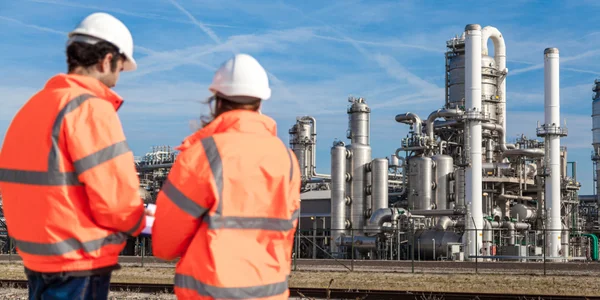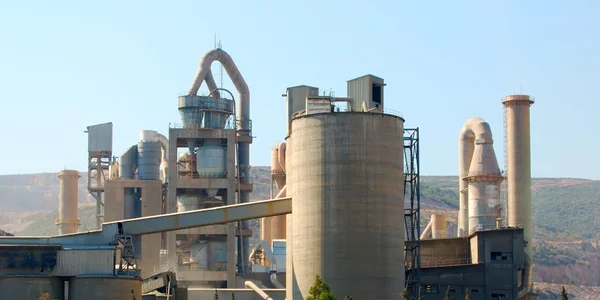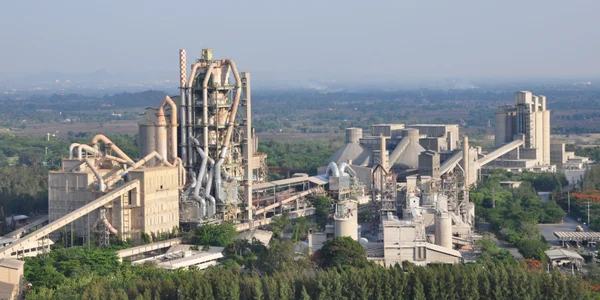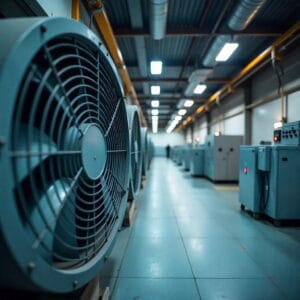دفاتر
ہیڈ کوارٹر

جرمنی
- Intensiv Filter Himenviro Technologies GmbH
Neustraße 45 - 49, 42553, Velbert, Deutschland/Germany - +49 20534200990
علاقائی دفتر

برطانیہ
- Intensiv Filter Himenviro UK Limited
47، باتھ سٹریٹ WS13BX، والسال ویسٹ مڈلینڈز، برطانیہ - +44 1922 628893
علاقائی دفتر

متحدہ عرب امارات
- Intensive Filter Himenviro Technologies FZE – LLC
بزنس سینٹر، شارجہ پبلشنگ سٹی فری زون، شارجہ، یو اے ای - +971-556074697
علاقائی دفتر

انڈیا
- انٹینسیو فلٹر ہیمین ویرو پرائیویٹ لمیٹڈ
D-247/11, Sector-63, Noida - 201301, Uttar Pradesh, India - +91-120-4642-500
علاقائی دفتر

انڈیا
- انٹینسیو فلٹر ہیمین ویرو پرائیویٹ لمیٹڈ
D-247/11, Sector-63, Noida - 201301, Uttar Pradesh, India - +91-120-4642-500
علاقائی دفتر

انڈیا
- انٹینسیو فلٹر ہیمین ویرو پرائیویٹ لمیٹڈ
D-247/11, Sector-63, Noida - 201301, Uttar Pradesh, India - +91-120-4642-500
اسٹیل اور میٹل ایئر اور ڈسٹ فلٹریشن سلوشنز
اسٹیل اور دھات کی صنعتیں ہوا سے چلنے والی آلودگیوں کی شدید سطح پیدا کرتی ہیں، جن میں باریک دھول، دھاتی ذرات اور دھوئیں شامل ہیں، جو اگر بے قابو ہو جائیں تو ماحولیاتی آلودگی، کارکنوں کے لیے صحت کے خطرات، اور سامان کو نقصان پہنچا سکتے ہیں۔ ہمارے ایئر اور ڈسٹ فلٹریشن سسٹمز ان ہائی ڈیمانڈ والے ماحول کو ہینڈل کرنے کے لیے تیار کیے گئے ہیں، جو پگھلنے، سمیلٹنگ، کاسٹنگ اور مکمل کرنے کے عمل سے اخراج کو حاصل کرتے ہیں۔ اعلی درجہ حرارت اور ذرات کے بوجھ کو برداشت کرنے کے لیے انجینئرڈ، ہمارے حل ہوا کے معیار کو بہتر بناتے ہیں، ریگولیٹری تعمیل کو بڑھاتے ہیں، اور افرادی قوت کی فلاح و بہبود کی حفاظت کرتے ہیں، صاف اور محفوظ پیداواری ماحول کو یقینی بناتے ہیں۔
سٹیل اور دھاتی صنعت میں دھول فلٹریشن کا عمل
الیکٹرک آرک فرنس کو تعمیراتی اسٹیل، اعلیٰ درجے کے اسٹیل، اور سٹینلیس سٹیل. مزید برآں، یہ کاربائیڈ اور مصنوعی کرسٹل کی تیاری کے لیے استعمال ہوتا ہے۔
الیکٹرک آرک فرنس کے لیے دھول ہٹانے والے پلانٹس آرک فرنس کی بنیادی فضلہ گیسوں کے ساتھ ساتھ فیوزنگ، رن آف یا لوڈنگ اور ڈیسلیگنگ کے دوران پیدا ہونے والی ثانوی فضلہ گیسوں کو مکمل طور پر نکالتے اور صاف کرتے ہیں۔ فضلہ گیسیں جو پین کی بھٹی میں، مواد کو سنبھالنے کے دوران اور دوسرے جڑے ہوئے پودوں میں بنتی ہیں، نکال کر علاج کی جاتی ہیں۔

چھت کے ہڈ کے لئے فلٹر
EAF کے لیے فلٹر کریں۔
- 1. چھت کا ہڈ
- 2. چھت کے ہڈ کے لیے فلٹر
- 3. وینٹی لیٹر
- 4. چمنی
- 5. الیکٹرک آرک فرنس
- 6. پانی سے ٹھنڈا نلیاں
- 7. ہیٹ ایکسچینجر
- 8. EAF کے لیے فلٹر کریں۔
- 9. وینٹی لیٹر
- 10. کنورٹر
مطلوبہ وضاحتیں
فلٹر ٹائٹل PJM
عام ڈیزائن ڈیٹا | چھت کا ہڈ |
|---|---|
گیس کا حجم | 1,000,000 |
گیس کا درجہ حرارت | 80 |
دھول کی قسم | آئرن آکسائیڈ دہن کی باقیات |
بقایا دھول کا مواد | <10 |
خام گیس دھول مواد | <5 |
صفائی | آن لائن / آف لائن |
فلٹر میڈیم | پالئیےسٹر |
دھماکے سے محفوظ ڈیزائن | ضروری نہیں |
Sorbent | ضروری نہیں |
فلٹر ٹائٹل PJM
عام ڈیزائن ڈیٹا | الیکٹرک آرک فرنس |
|---|---|
گیس کا حجم | 120,000 |
گیس کا درجہ حرارت | 120 |
دھول کی قسم | آئرن آکسائیڈ دہن کی باقیات |
بقایا دھول کا مواد | <10 |
خام گیس دھول مواد | <5 – 10 |
صفائی | آن لائن / آف لائن |
فلٹر میڈیم | پالئیےسٹر |
دھماکے سے محفوظ ڈیزائن | ضروری نہیں |
Sorbent | ضروری نہیں |
اسٹیل اور میٹل ڈسٹ کنٹرول کے لیے درخواستیں۔
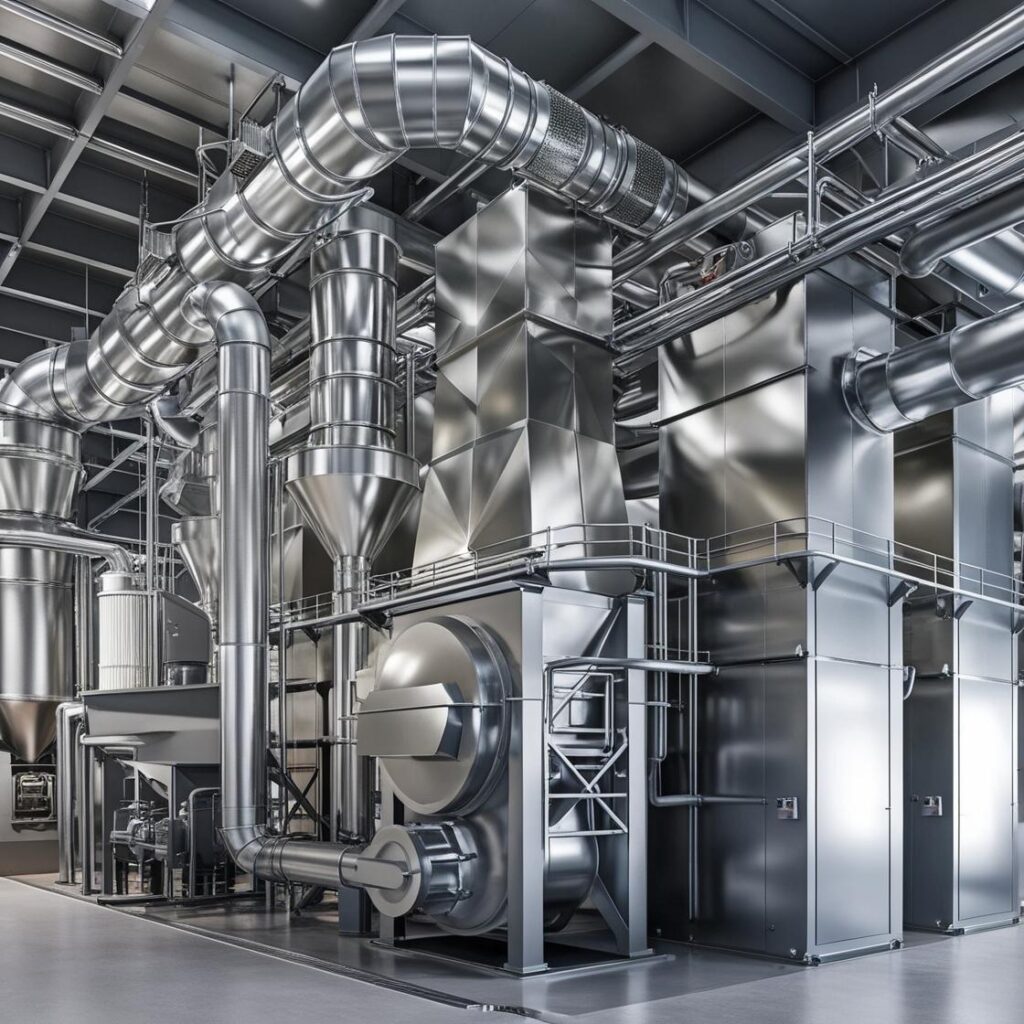
پگھلنے اور پگھلنے کے دوران خارج ہونے والی دھول اور دھوئیں کو کنٹرول کرتا ہے، اعلی درجہ حرارت والی بھٹیوں میں پیدا ہونے والے خطرناک ذرات کو پکڑتا ہے۔
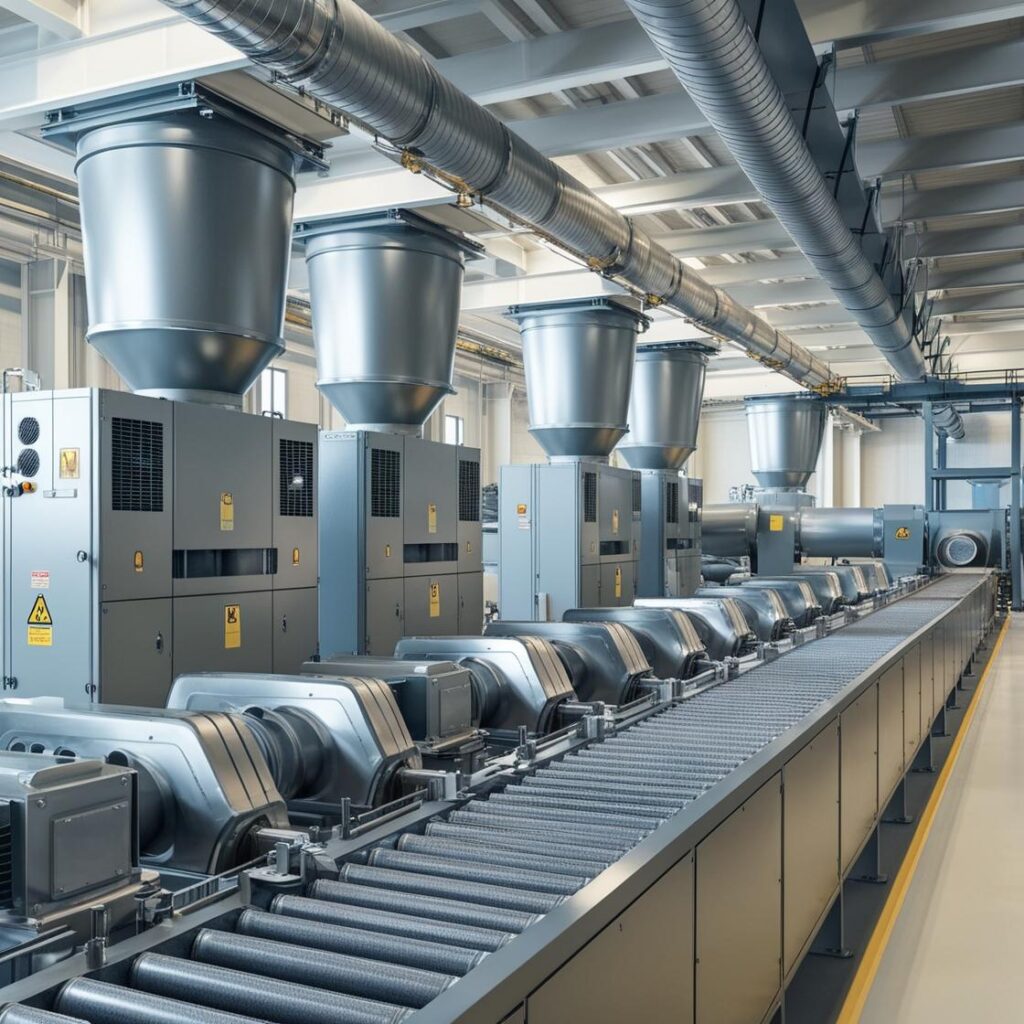
معدنیات سے متعلق کاموں سے اخراج کو کم کرتا ہے، ہوا سے پیدا ہونے والے ذرات اور دھاتی دھوئیں کو پکڑتا ہے جو ہوا کے معیار کو متاثر کر سکتے ہیں۔

پیسنے اور پالش کرنے کے دوران پیدا ہونے والی باریک دھول اور دھاتی شیونگ کو ہٹاتا ہے، آلودگیوں کو مصنوعات کے معیار اور کارکن کی حفاظت کو متاثر کرنے سے روکتا ہے۔
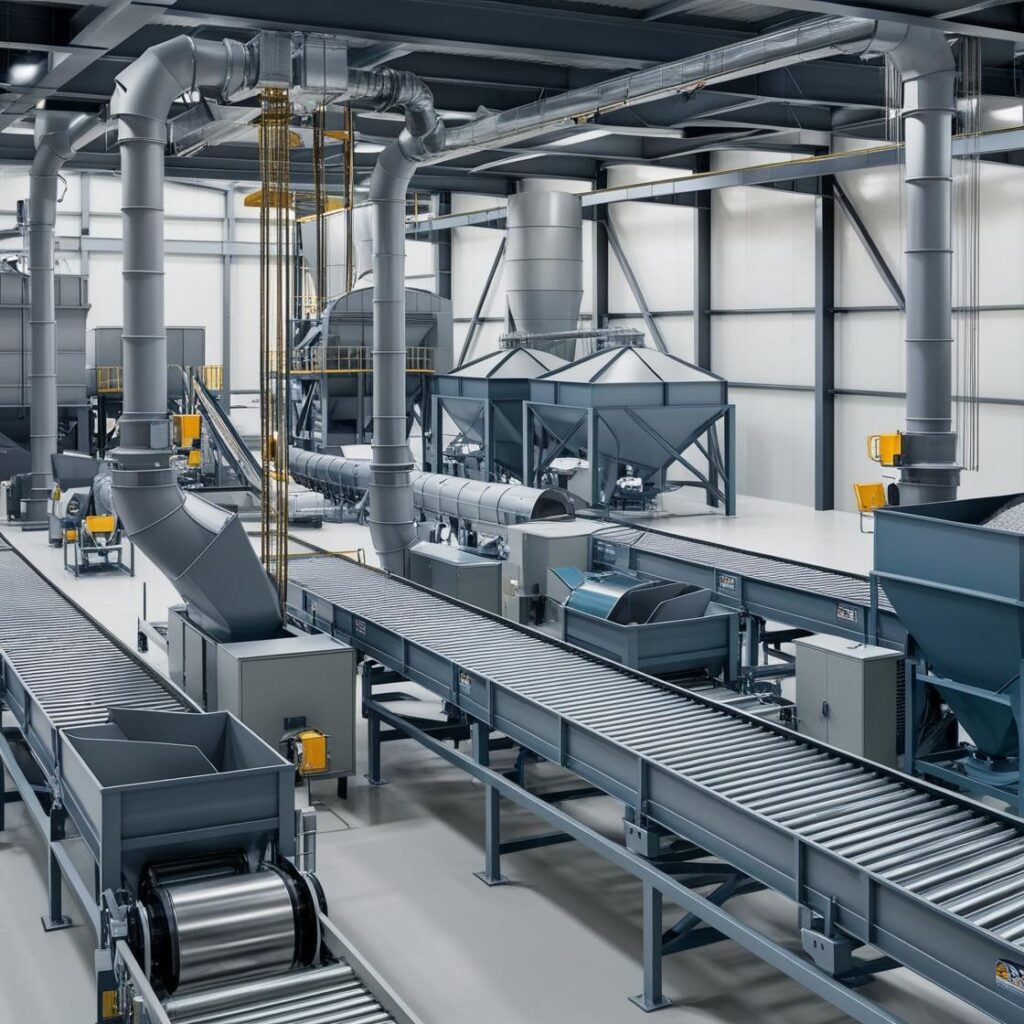
مواد کی ہینڈلنگ، ٹرانسپورٹ اور اسٹوریج کے دوران پیدا ہونے والی دھول کو کنٹرول کرتا ہے، کام کے ماحول میں ذرات کے اخراج کو کم سے کم کرتا ہے۔
دھول کنٹرول کے لیے ریگولیٹری لینڈ سکیپ |
|---|
ہوا کے معیار کے معیارات کی تعمیل |
کارکن کی صحت اور حفاظت کی تعمیل |
آگ اور دھماکے کے خطرے کی روک تھام |
ماحولیاتی تحفظ کی تعمیل |
ریئل ٹائم ایمیشن مانیٹرنگ |
گرمی کی مزاحمت |
کم دیکھ بھال اور ڈاؤن ٹائم |
پروڈکٹ کوالٹی اشورینس |
کم آپریشنل اخراجات |
ڈسٹ کنٹرول چیلنجز |
|---|
دھول اور دھوئیں کی اعلی سطح |
دھاتی ذرات سے کارکن کی صحت کے خطرات |
سخت ماحولیاتی ضوابط |
آگ اور دھماکے کے خطرات |
حتمی مصنوعات کی آلودگی |
آلات پر کھرچنے والی دھول کا لباس |
درجہ حرارت رواداری کے تقاضے |
دھول جمع کرنے کے بڑے حجم کا انتظام کرنا |
دیکھ بھال سے متعلق ڈاؤن ٹائم کو کم سے کم کرنا |
مؤثر دھول کنٹرول کے لیے اہم تحفظات |
|---|
اخراج پوائنٹس پر ٹارگٹڈ کیپچر |
اعلی درجہ حرارت کے تحت استحکام |
آپٹمائزڈ ایئر فلو اور پریشر کنٹرول |
گرمی مزاحم فلٹریشن مواد |
ریگولر مینٹیننس پروٹوکول |
صنعت-معیاری تعمیل |
لچکدار، حسب ضرورت حل |
دہن کے خطرات کے لیے خطرے کی تخفیف |
پیداوار کے مختلف مراحل کے لیے سرشار نظام |
ماہرین کی مشاورت کے لیے ہم سے رابطہ کریں۔
ہماری دیگر خدمات دریافت کریں!
اکثر پوچھے گئے سوالات
اسٹیل اور میٹل پروسیسنگ میں، عام فلٹریشن سسٹم میں بیگ ہاؤس فلٹرز، الیکٹرو سٹیٹک پریپیٹیٹرز (ESPs)، گیلے اسکربرز، اور سائکلون سیپریٹرز شامل ہیں۔ Baghouse فلٹر دھول کے ذرات کو پکڑنے کے لیے کپڑے کے تھیلے استعمال کرتے ہیں، جبکہ ESPs ایگزاسٹ گیسوں سے ذرات کو ہٹانے کے لیے برقی چارجز کا استعمال کرتے ہیں۔ گیلے اسکربرز اسکربنگ مائع کو متعارف کروا کر آلودگیوں کو ہٹاتے ہیں، اور سائیکلون سے جدا کرنے والے گیس کی ندیوں سے دھول کو الگ کرنے کے لیے سینٹرفیوگل فورس کا استعمال کرتے ہیں۔ نظام کا انتخاب ذرہ سائز، گیس کا درجہ حرارت، اور مخصوص عمل کی ضروریات جیسے عوامل پر منحصر ہے۔
فلٹریشن سسٹم دھاتی پروسیسنگ کے دوران پیدا ہونے والے ذرات اور آلودگی کو مؤثر طریقے سے پکڑ کر اور ہٹا کر ہوا کے معیار کو بہتر بناتے ہیں۔ اخراج کو کم کرکے، یہ نظام سہولیات کو ماحولیاتی ضوابط اور معیارات کی تعمیل کرنے میں مدد کرتے ہیں، اس طرح ان کے ماحولیاتی اثرات کو کم کرتے ہیں اور ایک محفوظ کام کی جگہ کو فروغ دیتے ہیں۔
ESPs باریک ذرات کو ہٹانے میں اعلی کارکردگی پیش کرتے ہیں، 99% تک کی کارکردگی حاصل کرتے ہیں، جو خاص طور پر اسٹیل کی تیاری میں فائدہ مند ہے جہاں فلو گیس کے اخراج میں اکثر باریک دھول کے ذرات ہوتے ہیں۔ وہ گیس کے بڑے حجم کو سنبھالنے کے قابل ہیں اور اعلی درجہ حرارت پر مؤثر طریقے سے کام کرتے ہیں۔ مزید برآں، ESPs میں نسبتاً کم دباؤ کے قطرے ہوتے ہیں، جس کے نتیجے میں آپریشن کے دوران توانائی کی کھپت کم ہوتی ہے۔

